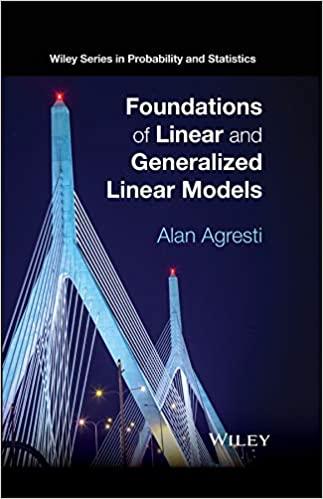Consider independent binary observations from two groups with ????i = P(yi = 1) = 1 P(yi
Question:
Consider independent binary observations from two groups with ????i =
P(yi = 1) = 1 − P(yi = 0), and a binary predictor x. For the 2×2 contingency table summarizing the two binomials, let logit(????i) = ????0 + ????1xi, where xi = 1 or xi = 0 according to a subject’s group classification. Also, express logit(????i) = ????∗
0 + ????∗
1 x∗
i , where x∗
i = 1 when xi = 0 and x∗
i = 0 when xi = 1
(i.e., the classification when the group labels are reversed). Let ???? = exp(????1)
and ????∗ = exp(????∗
1 ) denote the corresponding odds ratios. The ML estimates satisfy ????̂∗
1 = −????̂
1 and ????̂∗ = 1∕????̂. For a Bayesian solution, denote the means of the posterior distributions of ????1 and ????∗
1 by ????̃
1 and ????̃∗
1 and the means of the posterior distributions of ???? and ????∗ by ????̃ and ????̃∗.
a. Explain why ????̃∗
1 = −????̃
1 but ????̃∗ ≠ 1∕????̃.
b. Let (L, U) denote the 95% HPD interval from the posterior distribution of ????. Explain why the 95% HPD interval from the posterior distribution of ????∗ is not (1∕U, 1∕L). Explain why such invariance does occur for the equal-tail interval and for frequentist inference.
Step by Step Answer:

Foundations Of Linear And Generalized Linear Models
ISBN: 9781118730034
1st Edition
Authors: Alan Agresti





